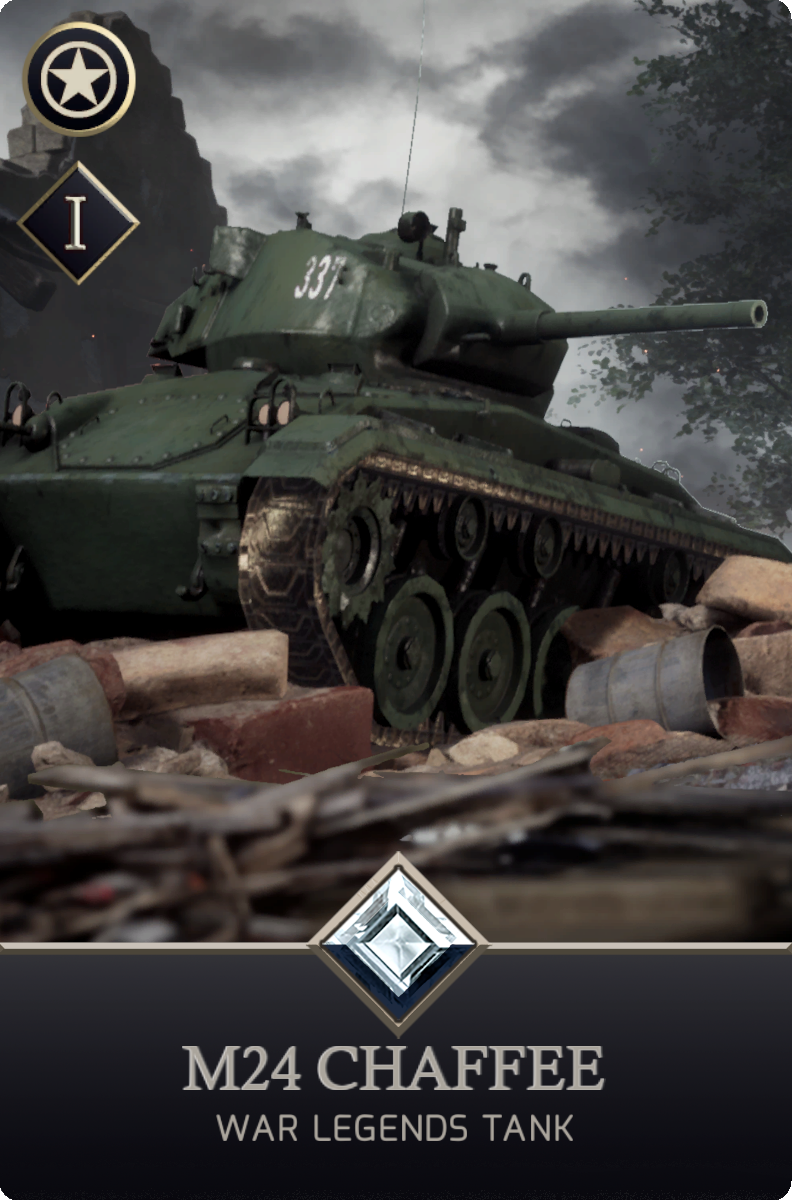


Tank Background
The M24 Chaffee was an American light tank used at the end of World War II. Named Chaffee after US Army General Adna R. Chaffee.
The first prototype was completed on 15 October 1943, from which production began in the spring of 1944, designated the M24 Light Tank.
The crew consisted of 5 men, tank commander, gunner, loader, driver and assistant driver/radio operator.
Logistically it proved to be an easy vehicle to maintain, and later when exported it proved to be an economical tank, ideal for countries with little war investment.
The new tank was better than all other light tanks of World War II, demonstrating greater mobility and exceptional agility. It increased in protection, thanks to major changes in the actual shape of the tank. In addition, the armored plating was joined by welds rather than rivets as in past designs, achieving greater protection than the M5, while remaining true to the theory that protection was also afforded by speed and agility, compensating for the poor armor.
Its 75mm M6 gun did not allow it to hit targets on the move, the drawback of the M6 was that it developed low initial velocity for its armor-piercing shells, which meant that its anti-tank effectiveness was diminished.
Just outside Dormagen, Germany, on the west bank of the Rhine River, a pair of M24s from the 4th Cavalry Reconnaissance Squadron encountered a pair of Panzers. The German crews were caught by surprise, as the M24s had the advantage of speed and a higher turret rate of turn. Before the Panzers could turn their turrets towards their smaller, faster opponents, the M24s fired several high-explosive rounds into the thinner side and rear armor of both Panzers, which was enough to ignite internal fires that destroyed both Panzers.








